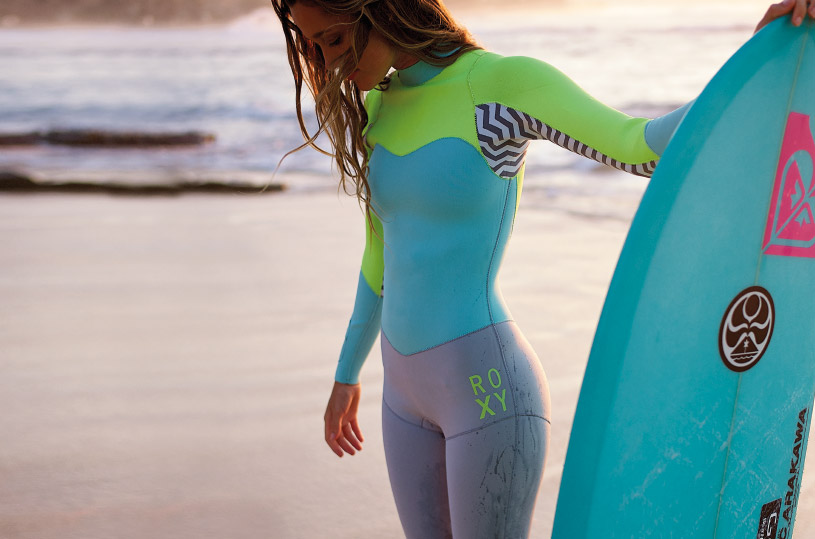About to surf a new coastline for the first time? Learning to surf and not sure which type of surfing wetsuit to buy? Wondering what thickness of wetsuit you’ll need, or whether to wear wetsuit boots, or whether you’ll be able to wing it in boardies?
This is a very rough wetsuit temperature guide for surfing, featuring advice on how much neoprene to wear. I refer mostly to water rather than air temperatures, but bear in mind that the latter can make a big and often decisive difference, as can the wind. Other obvious factors to bear in mind are the amount of time you’re likely to be in the water, the surf conditions on the day, yearly (as opposed to seasonal) fluctuations in water temperature, and your own susceptibility to the cold. Some surfers prioritise warmth above all else, others are prepared to sacrifice a little warmth for the greater flexibility of thinner neoprene, or the freedom of no neoprene at all.
Wetsuits
Very generally speaking:
- 18-23 °C: short-sleeved and/or short-legged wetsuit
- 16-21 °C: 3mm wetsuit (3/2 fullsuit)
- 11-17 °C: 4mm wetsuit (4/3 fullsuit)
- 6-15 °C: 5mm wetsuit (5/4 or 5/4/3 fullsuit)
- 8 °C or under: 6mm wetsuit (6/5/4, 6/5 or 6/4 fullsuit)
As you can see, there’s a degree or two of overlap. You can lead a perfectly happy existence without owning, say, a 4/3 wetsuit, but there will come a time of year when you’re either slightly chilly in your 3/2 or slightly hot in your 5/4.






